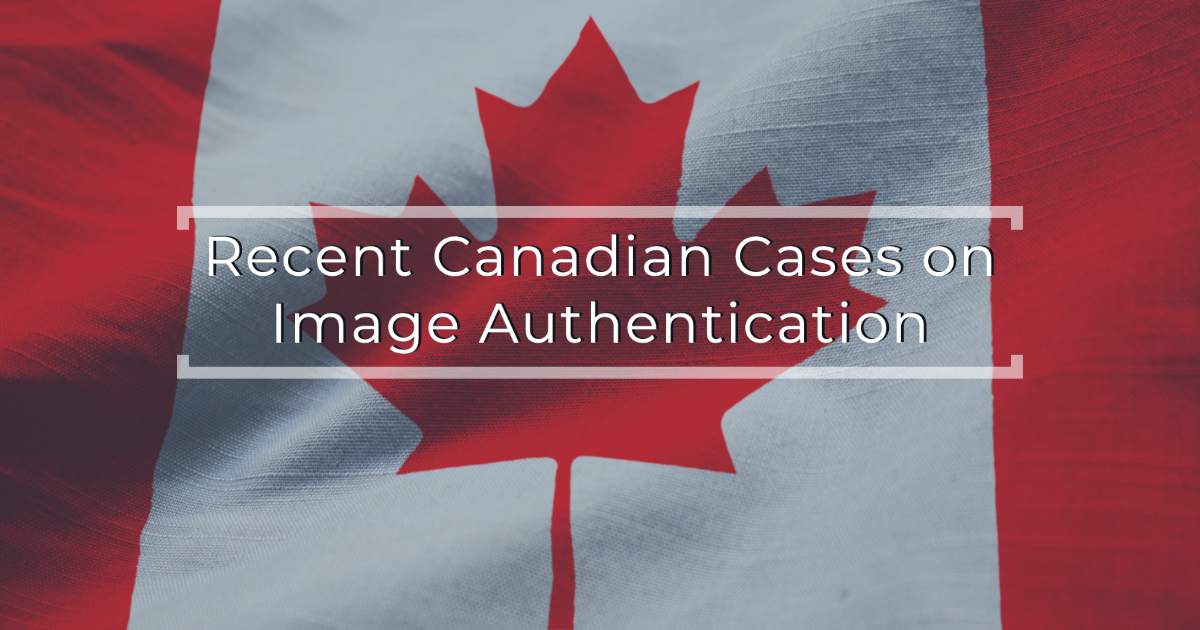Several times a year I conduct a comprehensive search of recent reported case law on topics related to video evidence, forensic video analysis, and pertinent expert witness testimony issues. This provides me with new case law that illustrates how courts are assessing and deciding relevant litigated issues on these topics. This brief article focuses on the issue of image authentication and rulings made by courts in Canada during the latter half of 2021. I will feature two of those cases, describe the facts, the issue, the ruling, and the takeaway.
R. v. Bluecloud, 2021 ONCJ 2021 (Ontario Court of Justice)
Does establishing image authenticity require proof that the video images have not been altered? That was the question addressed in this Ontario case involving a spree of robberies where part of the evidence relied upon by the Crown was CCTV video from some of the robbery locations. The trial judge studied the video images and compared them to known images of the defendant and concluded that the defendant was the person shown in the robbery videos. This is in accordance with the power given to trial judges by the Supreme Court of Canada in R. v. Nikolovski, [1996] 3 S.C.R. 1197.
The defence argued that the law requires proof that the video images have not been altered before the trial judge can make a finding on identification. This argument was previously considered by the Alberta Court of Appeal in R. v. Bulldog, 2015 ABCA 251, and rejected. The Court of Appeal ruled that the failure to establish non-alteration was not determinative so long as the Crown proves that the images are substantially fair and accurate in their portrayal of what is shown.
In this case, the store employee testified that the videos accurately showed the locations in question, and she further testified as to how they were recorded by the CCTV system, the steps taken to ensure their reliability, and the accuracy of their date and time stamps. The trial judge found that this evidence was sufficient to meet the authentication threshold. It was not necessary to additionally prove a negative, namely lack of alteration.
R. v. Ellison, 2021 ONSC 4794 (Ontario Superior Court of Justice)
Does the absence of a date and time stamp adversely impact the ability of the tendering party to authenticate video recordings? In this case the trial judge admitted video evidence that did not display a date and time stamp and on appeal it was argued that the judge erred in doing so. The appellate court noted that the admissibility of image-based evidence is dependent upon the accuracy of the images, the fairness of their depiction, and their authenticity. Authenticity in turn is contingent upon proof that the images accurately portray that which they purport to show, the lack of any intention to mislead, and verification under oath by someone capable of establishing these facts. The date and time of a recorded event can be proven other than by an embedded date and time stamp and therefore it is not a requirement that one be present.
Commentary
If you have had occasion to read earlier articles on this site, you may have noticed that I have written about these topics before. Legal and factual arguments are frequently recycled in court due to the way the doctrine of judicial precedent works. Lower courts are bound by the relevant rulings of superior courts in their own province and the Supreme Court of Canada, but not decisions in other provinces. For example, the absence of a requirement to prove lack of image alteration has been established in Alberta in Bulldog, but that appellate decision is only binding in Alberta. It might be persuasive in other jurisdictions, but courts in other provinces are free to decide differently. Until the Supreme Court of Canada or the relevant provincial Court of Appeal rules on a specific issue, counsel are free to recycle arguments in their cases. Because these arguments have been made before and ruled against, they are unlikely to be successful in the future if the court is aware of the prior rulings but that does not prevent counsel from arguing them and perhaps convincing a judge that their proposition is correct. That is why it is so important that all counsel be fully cognizant of the state of the law lest they contribute to bad case law being made.
